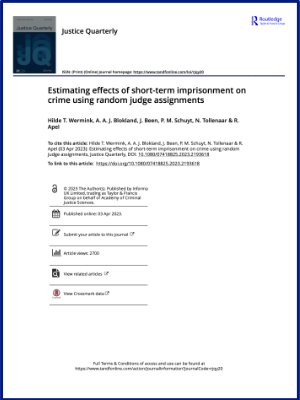By David H. Cloud; Brie Williams; Regine Haardörfer, et al
Question What is the association between exposures to extreme heat and suicide-watch incidents in a state prison system without air-conditioned living units?
Findings This case series of 6576 facility-incarceration days found that extreme heat was significantly associated with a 30% increase in the incident rate of daily suicide-watch incidents.
Meaning These findings suggest that extreme heat may increase vulnerabilities to situations that lead to suicide-watch placements for incarcerated people, bolstering calls for heat mitigation and decarceral interventions to assuage heat-induced harms among incarcerated populations.
Importance Extreme heat poses a distinct risk to the 2.1 million incarcerated people in the United States, who have disparately high rates of behavioral health conditions. Suicide is a leading cause of death among people in prisons.
Objective To examine associations of extreme heat, solitary confinement, and an indicator of suicidal behaviors among incarcerated men in a Deep South US prison system.
Design, Setting, and Participants This longitudinal case series panel study included adult men in prisons in Louisiana, a state with one of the largest prison systems in the United States that has been engaged in litigation due to lack of air conditioning and extreme heat. The unit of analysis was prison facility-days. A facility-level data set was created by merging administrative data files, which included demographic characteristics, health classification, housing location and movement, disciplinary records, and involvement in suicide-watch incidents for all incarcerated men in Louisiana during the observation period. Individual-level variables were aggregated to facility-days to merge in daily maximum heat index data from the US Local Climatological Data, which were linked to the zip codes of prisons. The observation period was January 1, 2015, to December 31, 2017. Data set construction occurred from August 2020 to September 2022, and analysis was conducted from December 2022 to February 2023.
Exposure The focal exposure was extreme heat days. Daily maximum heat index data were categorized into 6 bins (<30 °F, 30-39 °F, 40-49 °F, 50-59 °F, 70-79 °F, and ≥80 °F) and as an indicator for any facility-day where the maximum heat index exceeded the 90th percentile of heat indices for total days in observation period. Conditional fixed-effects negative binomial regression models were used to calculate incident rate ratios to test associations between extreme heat and suicide watch incidents, while controlling for covariates.
Main Outcomes and Measures The focal outcome was daily count of suicide watch incidents that were recorded in a carceral system database. Covariates included daily percentages of incarcerated persons at each prison with serious mental illness diagnosis, daily rate of solitary confinement, and total facility population.
Results The sample of 6 state-operated prisons provided 6576 facility-days for the analysis. Results suggest a dose-responsive association between extreme heat and daily counts of suicide-watch incidents; compared with days with temperatures between 60 and 69 °F, the rate of daily suicide incidents increased by 29% when the heat index reached the level of caution (ie, 80-89 °F) and by 36% when reaching extreme caution (90-103 °F) (80-89 °F: incidence rate ratio [IRR], 1.29; 95% CI, 1.17-1.43; P < .001; 90-103 °F: IRR, 1.36; 95% CI, 1.15-1.61; P 95% CI, 1.18-1.45; P < .001).
Conclusions and Relevance Findings suggest an association between extreme heat and an indicator of suicidality among an incarcerated sample, contribute to an emerging literature exploring linkages between climatological events and health outcomes in prisons, and may have implications for legal interventions and advocacy seeking to abate heat-induced morbidity and mortality in carceral contexts.
JAMA Netw Open. 2023 Aug; 6(8): e2328380.





















